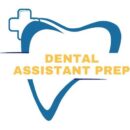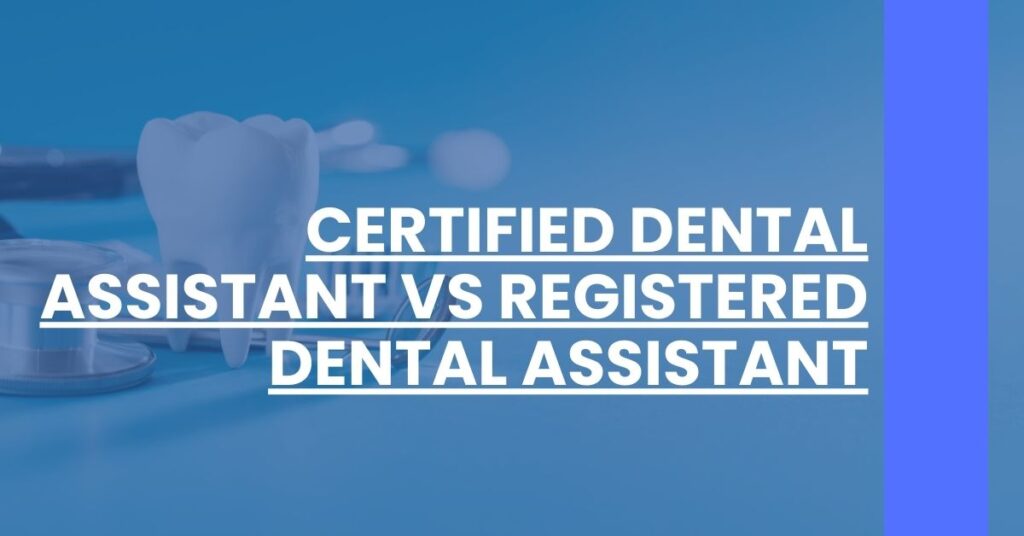Certified dental assistant vs registered dental assistant: an essential comparison for your dental career pathway.
- Education for Certified Dental Assistant vs Registered Dental Assistant: Understand the distinct academic trails leading to each certification.
- Scope of Practice: Explore how the duties and legal permissions differ for CDAs and RDAs.
- Career Advancement: Assess the growth and salary prospects unique to CDAs and RDAs.
Choose wisely between a certified dental assistant and a registered dental assistant to best align with your professional goals.
Understanding the Roles of CDAs and RDAs
The dental assisting profession is an integral part of the dental care team, facilitating efficient office operations and ensuring patient comfort and care. Within this field, the terms Certified Dental Assistant (CDA) and Registered Dental Assistant (RDA) often emerge. Although these titles may sound similar, they designate different qualifications and responsibilities. Understanding these roles can help aspiring dental assistants carve their professional path and ensure that they meet the legal and practical requirements of their chosen career.
What is a Certified Dental Assistant (CDA)?
A CDA is a dental assistant who has received certification through the Dental Assisting National Board, which is a nationally recognized credentialing body. To obtain this certification, dental assistants must pass an examination that evaluates their knowledge and skills in dental assisting tasks.
Key Responsibilities of CDAs:
- Assisting the Dentist: CDAs are typically responsible for preparing patients for dental procedures, passing instruments during treatments, and helping the dentist with various tasks.
- Patient Care: They may also take on roles that involve directly caring for patients, such as taking dental x-rays, educating patients about oral hygiene, and maintaining comfortable and safe treatment environments.
- Administrative Tasks: Apart from clinical duties, CDAs may also handle administrative responsibilities like scheduling appointments, managing patient records, and processing billing and payments.
What is a Registered Dental Assistant (RDA)?
An RDA, on the other hand, is a dental assistant who is registered with a state dental board. The specific requirements to become an RDA vary by state but typically include passing state-level examinations and meeting criteria set by the state’s dental board.
Key Responsibilities of RDAs:
- Expanded Duties: In addition to the tasks performed by CDAs, RDAs often have a wider scope of practice which can include performing coronal polishing, applying sealants, and conducting preliminary mouth-mirror inspections under a dentist’s supervision.
- Direct Supervision: RDAs must work with more direct oversight from a dentist and may have state-specific responsibilities that require additional certifications or training.
It is important to note that while both CDAs and RDAs assist in dental procedures, the scope of practice for RDAs may be broader and more varied, depending on the state in which they practice.
Educational Pathways
To become a CDA or RDA, one must complete specific educational and training requirements.
- For CDAs:
- For RDAs:
By recognizing these foundational differences, those looking to enter the dental assisting field can better plan their educational journey and overall career trajectory.
Responsibilities and Scope of Practice
The scope of practice for both CDAs and RDAs depends heavily on the specific regulations of the state they practice in. However, understanding their general roles provides a benchmark for the duties each may carry out.
Clinical Duties
RDAs often perform more complex clinical tasks:
- Coronal Polishing: Removing plaque and stains from teeth to prepare them for further treatments.
- Sealant Application: Protecting the chewing surfaces of teeth by applying sealants.
- Taking Impressions: Assisting in creating dental impressions for study casts and appliances.
CDAs, while often involved in clinical duties, typically have a more limited scope:
- Patient Preparation: Setting up examination rooms and ensuring patients are ready for procedures.
- Sterilization of Tools: Maintaining the cleanliness and sterilization of dental instruments and equipment.
- X-ray Procedures: Operating radiographic equipment to take dental x-rays under the direction of a dentist.
Patient Interaction and Education
Both CDAs and RDAs are expected to provide a positive and reassuring experience for patients.
- Communication: Explaining dental procedures and offering guidance on post-treatment care.
- Education: Teaching patients about proper oral hygiene practices.
- Comfort: Ensuring the comfort of patients during dental procedures.
Administrative Roles
On the administrative front, both CDAs and RDAs participate in the following:
- Scheduling: Organizing appointments and maintaining accurate scheduling systems.
- Record-Keeping: Ensuring patient records are up-to-date and accurately reflect treatments and communications.
- Billing: Handling the financial transactions associated with dental care.
Ultimately, while CDAs and RDAs share similarities in their fundamental roles, the key distinguishing factor is the complexity and range of clinical tasks they are permitted to perform, which varies by state and is typically expanded for RDAs. As the dental industry evolves, dental assistants will continue to be a pivotal part of teams delivering critical oral health services. For those seeking to learn more about the roles and distinctions, resources such as the Dental Assisting National Board and state dental boards can be invaluable.
Side-by-Side Comparison: CDA vs RDA
When choosing a career as a dental assistant, two prominent paths appear – Certified Dental Assistant (CDA) and Registered Dental Assistant (RDA). Here’s how they stack up against each other:
Credentials and Certification
- Certified Dental Assistant (CDA):
- Registered Dental Assistant (RDA):
Education Requirements
- CDA:
- RDA:
Job Duties
- CDA:
- RDA:
Recognition and Mobility
- CDA:
- RDA:
Using these distinctions allows prospective dental assistants to weigh their options against their long-term career plans and state regulations where they intend to practice.
Pathways to Certification and Registration
The avenues to becoming a CDA or RDA can be unique, with specific steps to follow for each:
Steps to CDA Certification
- Education:
- Examination:
- Continuing Education:
Steps to RDA Registration
- Education:
- State Exams:
- Application:
Each state has its unique layers of requirements, emphasizing the importance of consulting the local dental board for precise and up-to-date information such as the California Dental Board.
Career Outlook and Advancement Opportunities
Dental assisting is a swiftly evolving field. Here’s an overview of the professional vistas for CDAs and RDAs:
Salary Expectations
- CDA:
- RDA:
Long-Term Career Prospects
- CDA:
- RDA:
Both certifications present opportunities for growth which are amplified with further education and experience in the field. Demands for these roles are growing, offering a stable career with competitive compensation.
State-by-State Requirements and Variations
The requirements for CDAs and RDAs aren’t uniform across all states. It’s crucial to understand these differences:
Understanding State Specifics
- Required Training: States like California may have specific courses or additional exams necessary for RDAs which do not apply in other states.
- Regional Supply and Demand: Job availability and standard practices can vary largely depending on the region.
Why It Matters
Knowing detailed, localized requirements helps ensure that dental assistants are qualified and compliant with the laws governing their profession within their state and can correctly plan their career development.
Prospective CDAs and RDAs should thoroughly research and stay updated with the regulations and opportunities in their preferred state All Allied Health Schools.
How to Decide Between CDA and RDA
For those at the crossroads of choosing between the CDA and RDA credentials, consider the following:
Professional Aims
- Preference for a Wide Recognition or Specialized State-specific Practice:
Job Market Dynamics
- Demand for RDAs vs. CDAs:
Personal Considerations
- Lifestyle and Flexibility:
Making an informed decision involves reflecting on your career ambitions, local regulatory landscapes, and personal aspirations. This comprehensive approach can set the stage for a fulfilling and successful career in dental assisting. For more in-depth guidance and potential pathways within the dentistry profession, consult resources such as 360Training’s career insights.
Choosing the right path as a dental assistant—whether it’s the CDA or RDA route—requires careful consideration of one’s goals, local job market demands, and state regulations. Take the time to weigh these factors and carefully chart a course that aligns with your career aspirations and lifestyle preferences.

